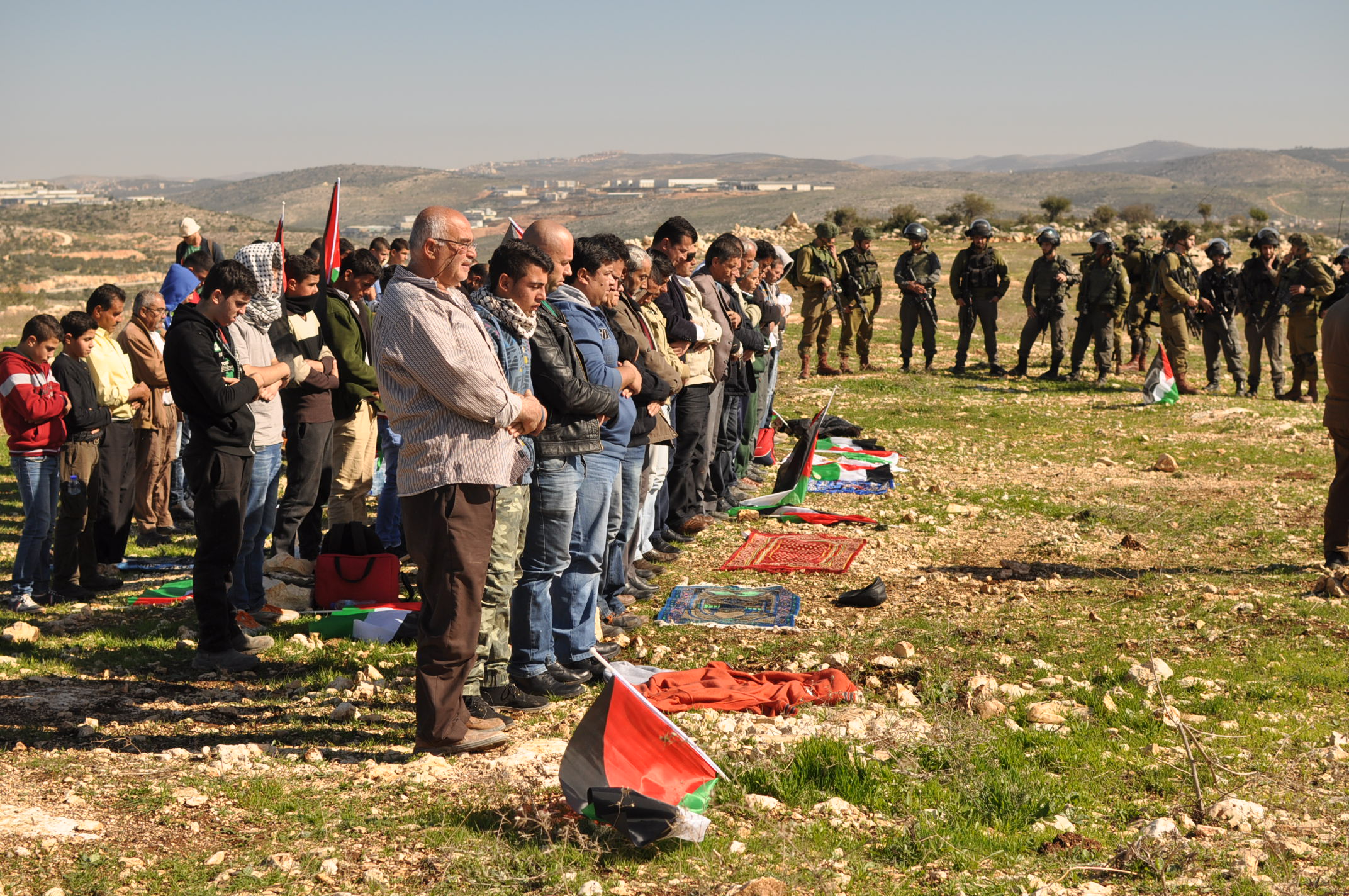Tag: prayer
-
Second Friday of Ramadan at Qalandia Checkpoint
22 March 2024 | International Solidarity Movement | Qalandia checkpoint Palestinians perform Friday mid-day prayer outside of Qalandia checkpoint this morning while held at gunpoint by Israeli occupation soldiers, after being forcefully denied their right to enter Al-Quds to pray at Al-Aqsa. People trying to enter were again met with an intensified militarisation of Qalandia…
-
Near Salfit, Palestinians try to save the last hill that is not yet occupied with a settlement
December 4th, 2015 | International Solidarity Movement with IWPS, Huwwara team | Kafr Addik, occupied Palestine On friday 4th of december, around 50 locals from the villages of Kafr Addik, Bruqin, Sarta and Biddya, in the Salfit governorate, gathered on a hill called Daher Sabbah, located between the four villages, in order to protest the…


